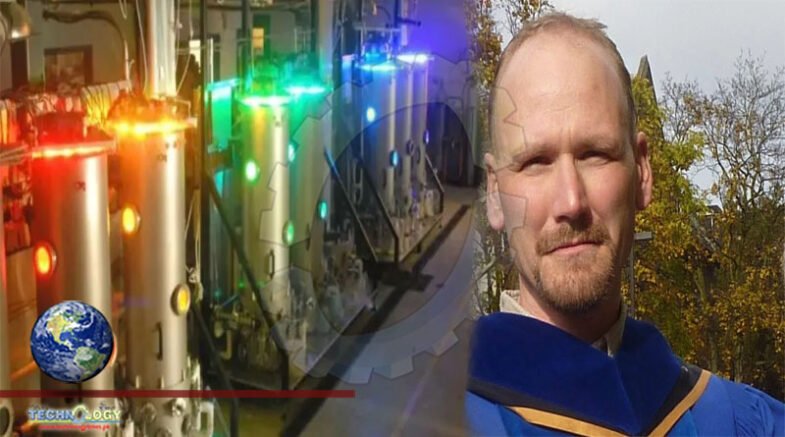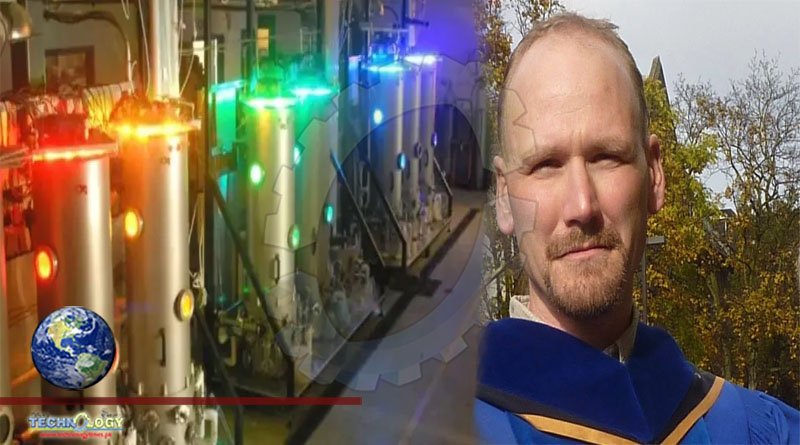How do you grow food in space? Guelph researchers to help judge innovative ideas, One of the goals of this challenge is to innovate and think outside the box,’
In order to one day live in space, people will need to learn to grow food in space and three researchers at the University of Guelph will be helping develop that technology.

Thomas Graham, a professor in the school of environmental sciences, has been named co-chair of a new national jury that’ll evaluate feasible ideas for growing crops in space using food production technologies. It’s part of the Deep Space Food Challenge behing held by the Canadian Space Agency (CSA) and the National Aeronautics and Space Administration (NASA).
“It’s an honour and certainly an acknowledgement of our expertise in this area, so it’s good,” Graham said in an interview of being asked to co-chair the jury.
“I take it as a recognition of the work that the university has done in this area, the Control Environment System Research Facility, over the last 25 years.”
The other co-chair is Canadian astronaut Chris Hadfield.
“By all accounts, it should be quite interesting [working with him]. He’s the coach here and his perspective is quite unique,” Graham said.
“He’s an astronaut, people like him or with his experience will benefit from these systems.”
Others from the University of Guelph who are part of the new 11-member jury include associate professor Lawrence Goodridge from the department of food science and the university’s special adviser to the president on Indigenous initiative and SES doctoral grad Cara Wehkamp.
Dr. Thomas Graham, professor in the School of Environmental Sciences (SES), was named co-chair of a new national jury that’ll evaluate ideas for growing crops in space. (Submitted by Thomas Graham)
‘Think outside the box’
The idea is to use agricultural systems such as greenhouses, vertical and urban farms as already used here on earth, but transporting the concept on the moon.
There was an open call to people from around the country to take part. Phase one saw submissions and candidates were chosen for phase two, which will see researchers get grant funding to develop a prototype of their idea.
In phase three, selected candidates will be provided with funds to build a demonstration unit of their idea. The whole challenge and its procedures will take place for approximately two years.
Graham and his colleagues have been looking into this research topic for a number of years, he said.
“One of the goals of this challenge is to innovate and think outside the box, come up with maybe some new ideas and ways to do things just a little bit better, or maybe a lot better,” he said.
“I’m really excited to see some of the ideas that will come from this challenge, they can certainly improve agricultural production here on earth, as well as support our astronauts as they head to the moon.”
Particular examples of what’s expected from candidates are novel ideas on automation, artificial intelligence or machine learning aspects and crop types.
Dry food cannot be part of the design — only fresh foods that will help maintain a healthy body.
Growing in extreme, harsh environments
Part of the challenge is to grow food to help astronauts who are on longer space missions, the challenge’s website says.
“Fresh food in space is the direct nutritional requirement to maintain a healthy crew,” said Graham. “If the crew isn’t healthy they’re not going to be productive.”
Growing deep space food is a new frontier, and Canadians will test its limits
SPECIAL REPORTGetting a crew to Mars: Here’s how NASA is tackling the mind-bending to-do list
But Graham says it’s also hoped the new systems will go beyond feeding a crew of four to six people.
“It’s to provide or demonstrate the capacity to produce a certain type of food,” he said.
As well, the challenge website says the technology could be used on Earth to grow food in urban centers as well as in remote and harsh environments.
Clélia Cothier, project manager for the challenge at the Canadian Space Agency, said in a release that it’s hoped the technology could be used in remote and Northern communities.
“The goal is to positively impact Canada beyond just space missions,” Cothier said.
Graham said one of the challenges in figuring out how to grow plants on the surface of the moon, for example, has been the extreme environment that astronauts have to exist in while they’re staying there. Temperatures can vary wildly and there’s also a difference in radiation.
But learning how to grow plans in space could enhance a human’s experience and benefit their mental health, he said..
“Plants in space are very important from a psychological perspective,” said Graham. “If you’re stuck in a tin can, it’s nice to have some green stuff around to brighten your day.”
Plants are the life-support technology for humans that are going deep into space and Graham says it’s a must for astronauts to take while travelling.
“They are our life support system, we need them and that’s a general consensus with space agencies around the world,” he said.
Source CBC
